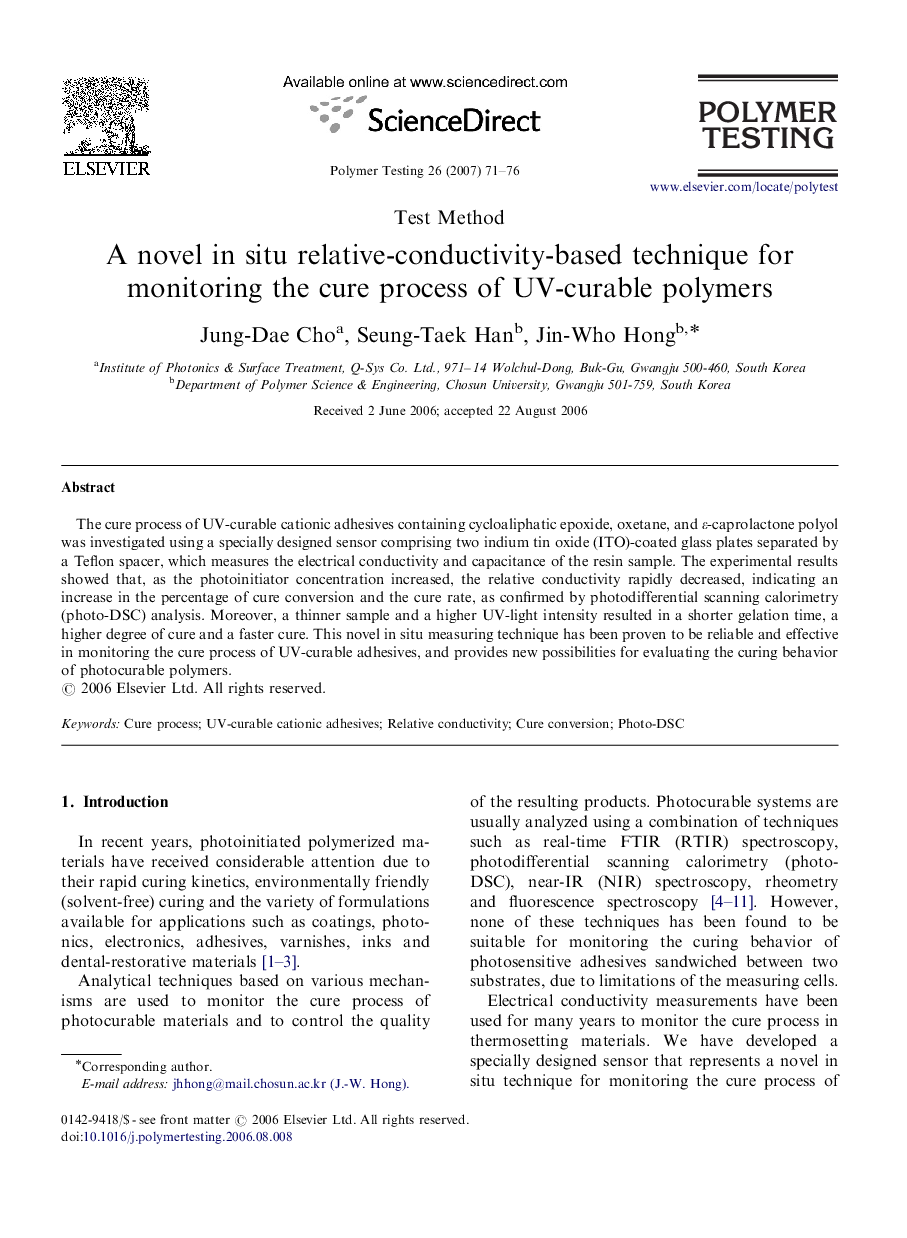| Article ID | Journal | Published Year | Pages | File Type |
|---|---|---|---|---|
| 5207822 | Polymer Testing | 2007 | 6 Pages |
Abstract
The cure process of UV-curable cationic adhesives containing cycloaliphatic epoxide, oxetane, and ε-caprolactone polyol was investigated using a specially designed sensor comprising two indium tin oxide (ITO)-coated glass plates separated by a Teflon spacer, which measures the electrical conductivity and capacitance of the resin sample. The experimental results showed that, as the photoinitiator concentration increased, the relative conductivity rapidly decreased, indicating an increase in the percentage of cure conversion and the cure rate, as confirmed by photodifferential scanning calorimetry (photo-DSC) analysis. Moreover, a thinner sample and a higher UV-light intensity resulted in a shorter gelation time, a higher degree of cure and a faster cure. This novel in situ measuring technique has been proven to be reliable and effective in monitoring the cure process of UV-curable adhesives, and provides new possibilities for evaluating the curing behavior of photocurable polymers.
Related Topics
Physical Sciences and Engineering
Chemistry
Organic Chemistry
Authors
Jung-Dae Cho, Seung-Taek Han, Jin-Who Hong,
